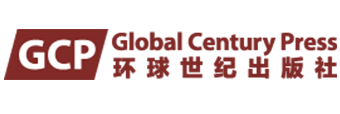话语分析在上世纪 80 年代伊始就开始传入中国,迄今已有 30 年左右的历史。30 年来,尤其是近十几年来,许多中国学者尝试运用话语分析的方法来对当代中国社会中各种“话语”的生产和传播过程以及“话语”对社会现实的建构作用进行描述和分析,在语言学、传播学、哲学、社会学、政治学、经济学、法学、心理学、教育学、国际关系、文艺评论等研究领域出现了数以千计的研究文献,其中包括有不少具有尝试性和创新性意义的研究成果。尽管和西方同行相比,中国学者在这方面的学术成就无论在数量上还是在质量上都还有相当的差距,但对于我们从话语建构的视角理解当代中国,这些文献还是具有其他文献难以替代的重要作用。
—— 《总序言一》,谢立中教授, 北京大学社会理论研究中心主任;中国社会学学会前副会长
近十多年来,许多中国学者关注当代中国话语研究,其学科背景各异,如社会学,文化研究,国际关系,新闻传播学背景、跨传播学与社会学,语言学背景的学者较多。还还有一些学者有着相似的西方学习或研究的经历,他们或在西方学者的指导下完成了其博士论文,他们深受西方学者的影响,既借鉴和反思了西方的话语研究传统,又将其研究方法引入中国。在此基础上,他们关注中国话语,挖掘和利用我国丰富的传统文化资源,将中国话语研究引向深入,并在学科范式上体现中国文化的特色。从总体上看,中国的话语研究正在从“西学东渐”向“东学西进”迈进。
——《总序言二》,钱毓芳教授,浙江工商大学中外话语研究院院长、中国英汉语比较研究会话语研究专业委员会副会长
近 10 年来,语料库分析方法被越来越多地用于社会科学与语言相关的研究,它使碎片化的信息聚集在一起,形成大规模的文本,供研究者观察语言中所反映的特定的话语定式。语料库分析基于文本,可弥补以往单凭直觉推断的缺陷,为人们提供自下而上的研究方法。语料库方法,作为一种语言学研究方法,其研究优势在于:对大规模文本超强的储存能力;对语言精确的解释力;超于人类大脑的学习能力。随着计算机技术的迅猛发展,结合语料库自动分析软件的大规模文本分析成为国际社会科学界开创语料库应用,发现社会生活文明之源的新手段。本研究收集了中英美三国主流报刊自出现低碳报道以来 15 年的新闻文本,结合语料库和批判话语分析的方法,考察中英美主流报刊围绕低碳经济的话语建构,旨在解读围绕低碳的话语是如何通过一系列因素被过滤出来,这些因素包括国家利益、受众定位,以及各国历史、政治和社会因素。本研究表明,语料库方法与批判话语分析方法具有互补性。如词频统计能快速在大规模文本中获取高频词,这些词也许对批判话语分析很有意义,是研究很好的起点。搭配分析可以观察语言意义的构成,语料库检索则进一步提供文本更多的语境信息,这些信息使我们看清意义的呈现方式。语料库方法和批判话语分析结合使定量定性分析有机结合起来,两者相得益彰。
——本书《序言》,钱毓芳
Discourse analysis began to be introduced to China in the early 1980s, and it has a history of about 30 years to date. Over these 30 years, especially in the past decade or so, many Chinese scholars have attempted to apply discourse analysis methods to describe and analyze the production and dissemination processes of various ‘discourses’ in contemporary Chinese society, as well as the constructive effects of ‘discourse’ on social reality. Thousands of research papers have emerged in fields such as linguistics, communication studies, philosophy, sociology, political science, economics, law, psychology, education, international relations, and literary criticism, many of which have experimental and innovative significance. Although compared to their Western counterparts, the academic achievements of Chinese scholars in this area are still quite behind in both quantity and quality, these documents still play an irreplaceable and important role in understanding contemporary China from a discourse construction perspective.
— General Preface I, Professor Xie Lizhong, Director of the Social Theory Research Center at Peking University;
former Vice President of the Chinese Sociological Association.
In the past decade or so, many Chinese scholars have focused on contemporary Chinese discourse studies. They come from diverse academic backgrounds, including sociology, cultural studies, international relations, journalism and communication, interdisciplinary between communication and sociology, and many come from a linguistic discipline. Some scholars have had similar experiences of studying or researching in the West. They either completed their doctoral theses under the guidance of Western scholars or have been profoundly influenced by them. They both draw upon and reflect on the Western tradition of discourse studies, and have introduced its research methods to China. Based on this, they focus on Chinese discourse, tapping into and utilizing the rich traditional cultural resources of our country, leading Chinese discourse research in-depth, and reflecting the unique characteristics of Chinese culture in their academic paradigms. Overall, Chinese discourse research is transitioning from ‘Western learning moving East’ to ‘Eastern learning advancing West.’
— General Preface II, Professor Qian Yufang, Director of the Sino-Foreign Discourse Research Institute at Zhejiang Gongshang University,
Vice Chairman of the Discourse Research Committee of the China English-Chinese Comparative Studies Association.
In the past 10 years, the corpus analysis method has been increasingly used in social sciences and linguistics-related research. It aggregates fragmented information, forming large-scale texts for researchers to observe specific discourse patterns reflected in the language. Corpus analysis is based on texts and can compensate for the shortcomings of previous intuition-based inferences, offering people a bottom-up research approach. As a linguistic research method, the advantages of the corpus method lie in its superior storage capacity for large-scale texts; precise interpretive power of language; and learning capabilities beyond human brain capacity. With the rapid development of computer technology, combined with automatic corpus analysis software, large-scale text analysis has become a new means in the international social science community to pioneer corpus applications and discover the origins of social life and civilization. This study collects news texts from mainstream newspapers in China, the UK, and the US over the past 15 years since the appearance of low-carbon reports. By combining corpus and critical discourse analysis methods, it examines the discourse construction of mainstream newspapers in China, the UK, and the US around a low-carbon economy. It aims to interpret how the discourse around low-carbon is filtered through various factors, including national interests, audience positioning, and historical, political, and social factors of each country. This study shows that the corpus method and critical discourse analysis method complement each other. For example, word frequency statistics can quickly obtain high-frequency words in large-scale texts. These words might be meaningful for critical discourse analysis, providing a good starting point for research. Collocation analysis can observe the construction of linguistic meaning, while corpus retrieval further provides more context information from the text, revealing how meanings are presented. The combination of the corpus method and critical discourse analysis enables a harmonious integration of quantitative and qualitative analysis, enhancing each other.
— Preface of this book, Qian Yufang.




